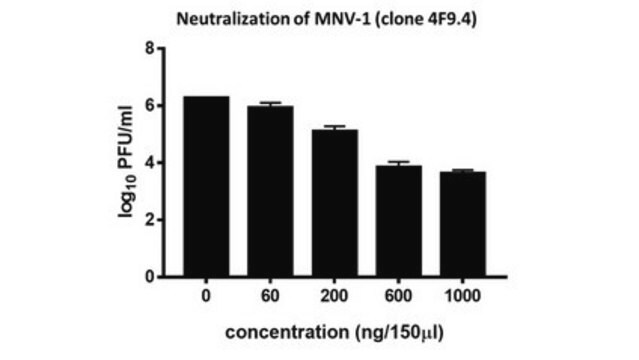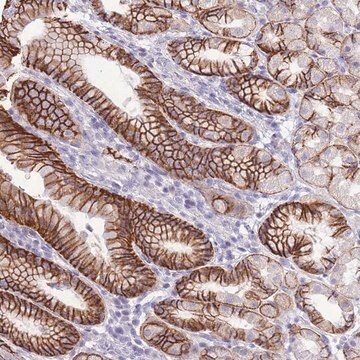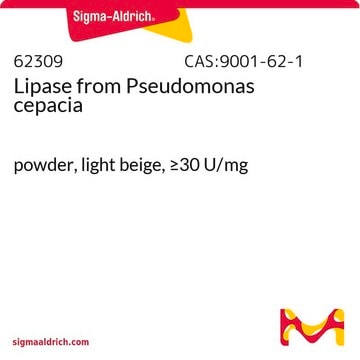MABF2097
Anti-Norovirus (MNV-1) Antibody, clone 5C4.10
clone 5C4.10, from mouse
Synonym(e):
MNV-1, Murine Norovirus
About This Item
Empfohlene Produkte
Biologische Quelle
mouse
Antikörperform
purified immunoglobulin
Antikörper-Produkttyp
primary antibodies
Klon
5C4.10, monoclonal
Speziesreaktivität
virus, norovirus
Verpackung
antibody small pack of 25 μg
Methode(n)
ELISA: suitable
western blot: suitable
Isotyp
IgG2bκ
Posttranslationale Modifikation Target
unmodified
Verwandte Kategorien
Allgemeine Beschreibung
Spezifität
Immunogen
Anwendung
Entzündung & Immunologie
ELISA Analysis: A representative lot detected Norovirus (MNV-1) in ELISA applications (Kolawole, A.O., et. al. (2014). J Gen Virol. 95(Pt 9):1958-68; Kolawole, A.O., et. al. (2017). mSphere. 2(5). pii: e00334-17).
Qualität
Western Blotting Analysis: 1 µg/mL of this antibody detected Norovirus (MNV-1) in RAW 264.7 cells infected with Murine norovirus-1.CW3.
Zielbeschreibung
Physikalische Form
Lagerung und Haltbarkeit
Sonstige Hinweise
Haftungsausschluss
Not finding the right product?
Try our Produkt-Auswahlhilfe.
Analysenzertifikate (COA)
Suchen Sie nach Analysenzertifikate (COA), indem Sie die Lot-/Chargennummer des Produkts eingeben. Lot- und Chargennummern sind auf dem Produktetikett hinter den Wörtern ‘Lot’ oder ‘Batch’ (Lot oder Charge) zu finden.
Besitzen Sie dieses Produkt bereits?
In der Dokumentenbibliothek finden Sie die Dokumentation zu den Produkten, die Sie kürzlich erworben haben.
Unser Team von Wissenschaftlern verfügt über Erfahrung in allen Forschungsbereichen einschließlich Life Science, Materialwissenschaften, chemischer Synthese, Chromatographie, Analytik und vielen mehr..
Setzen Sie sich mit dem technischen Dienst in Verbindung.








